This transcript was recorded at a Coffee & Conversation event that was hosted by AIA Dallas on January 14, 2025. It has been edited for clarity and brevity.
Introduction by Public Policy Committee chair, Norman Alston, FAIA:
Good morning, everybody. Welcome to the first coffee and conversation of 2025.
My name is Norman Alston, with AIA Dallas.
I am pleased to do the introductions this morning. We’re going to start the year off with a bang with a presentation about the urban design review panel. Some of you may or may not know about this panel, they’re an excellent planning resource that the city has made available. We have two distinguished guests here, participants in the program I’d like to introduce at this point.
On your left, is Arturo de Castillo, AIA and LEED AP. Arturo is the Assistant Director of the Planning and Development Department for the City of Dallas. You dedicated nearly 15 years to enhancing the city’s built environment. He leads the administration of the Historic Preservation and Conservation District programs. Good luck with that one, oversees the urban design peer review process, which we’ll be talking about this morning, and collaborates on neighborhood planning and major transportation initiatives.
Arturo works closely with the stakeholders and agency partners to create vibrant civic spaces. With over 25 years of experience in architecture and urban design in both the private and public sectors across North America and internationally, Arturo has been a staunch advocate for better design throughout Dallas. Leadership has been pivotal and city building programs such as the Hensley Field Master Plan, the 360 Plan in various neighborhood scale urban structure and guideline projects. He’s a licensed architect in California. They need you there, guy, and Texas, and holds LEED AP certification. He earned a Master of Architecture and Urban Design from Harvard University’s Graduate School of Design and a Bachelor of Architecture from California Polytechnic State University, San Luis Obispo. Welcome, Arturo. Thank you.
Our other guest this morning is Eurico Francisco, AIA. Eurico is an architect and urban designer committed to the quality of our cities. The design principal at Perkins&Will. His work has been recognized with over 3,000 design awards in the US and abroad. In addition, Fransico has a long history of leadership in advocacy in the design community. A graduate of Harvard University and the University of Sao Paulo. He has taught design studios at the University of Sao Paulo, Boston Architecture College, Rhode Island School of Design, and Texas Tech University.
He’s active in civic and professional organizations that work to elevate the quality of the urban environment, including the Dallas Architecture Forum, the Dallas Chapter of the American Institute of Architects, Texas Society of Architects, and the City of Dallas Urban Design Peer Review. Which he’s the chairman of. He doesn’t mention that in his bio here, but we know that. He’s also a contributing editor to Texas Architect Magazine and most recently served as jury chair of the 2023 AIA Health Care Design Awards Program. Originally from Sao Paulo, Francisco has called Dallas home for 25 years. Welcome, thank you very much for being here this morning.
I believe we want to start first with the slide presentation Arturo and tell us about the program itself. Take it from here.

Arturo del Castillo:
Thank you. Thank you, Norm. Thank you, AIA, for having me.

Yes, this morning we were asked to give a short presentation and have a little conversation about the city’s urban design peer review panel program. So, today we’re going to talk a little bit, give a little background on urban design in the city in general but specifically related to the panel, the panel’s purpose, and which projects get reviewed and why, the process, the roller panel, and some project sampling at the end and then cutting it off for discussion.
All right, so this first slide I wanted to do something in here because it’s important to understand and remember where the city has come from in terms of bringing in urban design as a component of the city’s day-to-day actions.
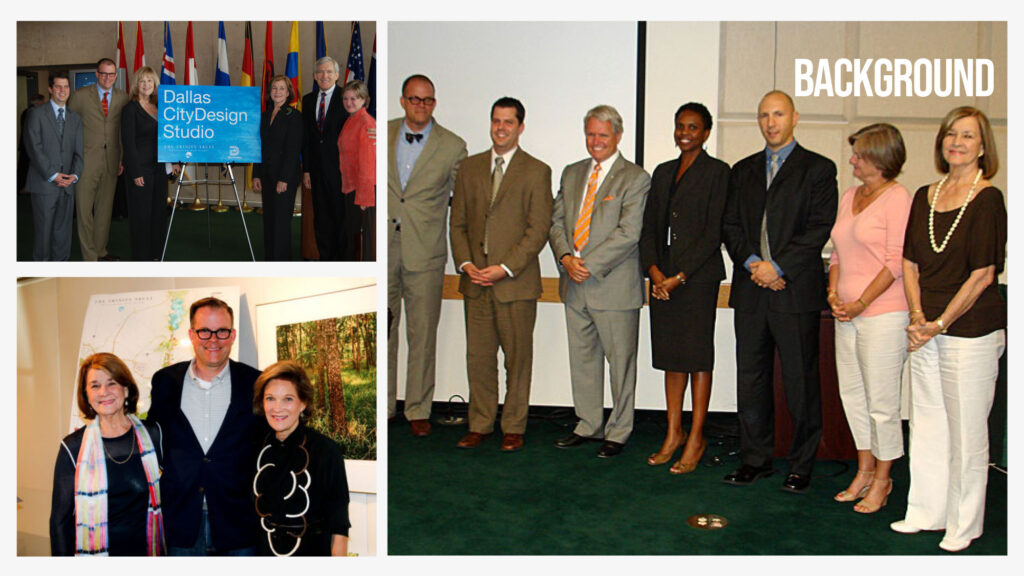
This first slide here represents something that happened in 2009. Before I say that, 1971 is when the city brought in Weiming Lu, I think from Minneapolis, as a deputy director in the planning group bringing in urban design as a component to the city’s day to day actions. He was instrumental instituting programs like the city’s historic program, historic preservation program, as well as the arts district and what you see now is his starting. He was here for eight years in 1979. He saw the writing on the wall where urban design with the new mayor was not a priority and the decisions were not allowed to happen; he was not able to move the conversation forward for urban design. So, for 30 years the city continued with some urban design as part of the day-to-day actions, but not necessarily a focus. In 2009, through a generous donation from private funding, what has been called the city design studio with the institute. These images here represent some of the folks who contributed to that: our former director, Brent Brown, David Whitley, and our advisor Larry Beasley.
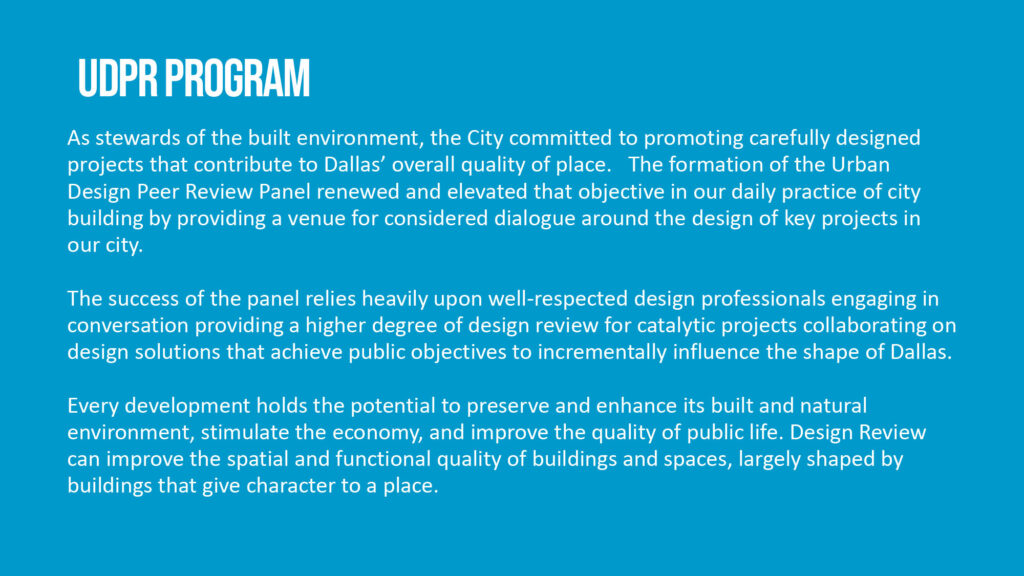
Through that, four years later, is when we instituted the Urban Design Peer Review Panel. The Urban Design Panel is a reaction or carrying forward of what would be the city council adopted actions from the 2011 Downtown Dallas 360 plan, the Downtown Dallas Inc. (DDI) and City of Dallas plan for downtown. One of the outcomes was that the city should have a dedicated urban design peer review panel that would carry forward some of the work that the design review fund had been doing, although not necessarily in a format that would provide, I think, better design conversations on projects receiving some sort of city incentives, whether it be TIFF funding or something like that. So that was 2013. The purpose was to establish a way for the city to comment on and improve our design within the public realm, providing effective feedback and dialogue for identifiable projects.
It was once to ensure the goals of Forward Dallas, the TIFF design guidelines and other policies. We met, as well, within the context of urban design and the public realm. Ensuring that new buildings and public spaces can demonstrate a high level of design, as well, and fit within their context and contribute to Dallas’ economic development success. And analysis of the advantages of the quality of life for citizens. This was also to help support design responses and new developments, foster an effective working relationship with the development community, and to broaden public discussion about design in Dallas.

This is one of the processes that we follow. This is the one we follow the most because we work more with developers who are seeking city financing and what this process shows is generally how the process works with other projects. First of all, when your development proposal is identified, in this case with the Office of Economic Development, the Planning and Development Department in our urban design group will meet with the office of economic development staff and developers to run through the Urban Plan Peer review program and determine an understanding as to when and how materials should be submitted, and what types of material should be submitted.
But first, through their program or their designs at an early stage—ideally at the schematic design phase—because getting involved any later might be too late. And before a project requires any sort of zoning changes, we want to ensure that happens before then.
So, we go through maybe one or two meetings of that, providing them initial design input. Asking them to come back with any changes that were necessary, and this is all related to the public realm, and they’re not necessarily interested in architectural style, although some of us do care about that. And then we put them on the calendar for one of our monthly urban design peer review meetings.

This is a slide of some photographs to show you what the Urban Design Peer Review Panel looks like, I know some of you, I’ve seen you in some of these meetings before, you might have brought a project in.
It’s meant to be a group review style of presentation: it’s not a public meeting style thing that we’re used to in the city. So, the panel sits on one side of the table, and the design and development team on the other side of the table. They make their presentation to the panel. The panel goes through a series of questions to better understand things that may not be clear.
Then they’ll go into their deliberation of providing design input and recommendations. Once that happens, staff will provide the development and design team a number of recommendations that might come out of that, roughly 7 to 15 items and we went back and forth with them as well as the office of development, you make sure those design recommendations can be met, if not in spirit at least in exact way that they were meant to be.
Again, those recommendations are along the public realm portion of a dwelling. I just want to include at the very bottom some of the staff members who have administered or administered the design review panel there at the bottom right corner is the gray partners who are currently our administrators.

And then this image here I like because it represents all the talented professionals that we’ve had and have on the panel. We currently have nine people on the panel. There’s one chair and one vice chair. It’s made up of design professionals, including architects, landscape artists, planners, and people in sustainability leading open-minded professions. All accomplished.
We do have a list, and continue to ask for recommendations, especially from the AIA Dallas folks who might be able to step in when a position becomes available.
There are four two-year terms and people sometimes used to roll off after two, after four. A lot of them will stay on for eight. That has been an important piece of the success of this UD panel and the incredible talented group of folks that volunteer their time with us.

This map kind of indicates where in the city we review projects. Norm you’ll be disappointed to know that we discounted and told you we were going live. We’ve had a little over 150 projects since 2013. I don’t know where the mass air occurred, but it did, and this represents several projects we’ve been doing since 2013 and where in the city they’ve happened. Of course, most of our projects do come from or are related to TIFF districts.
We mostly review projects, but the city’s Director of Planning and Development, Economic Development, and Housing can also bring projects in with the city manager’s approval. Also, any development team, any architecture team can volunteer to bring in a project as a volunteer project just to get free advice. We’ve seen that on a couple of occasions, not much, and we certainly like to advertise that as one of the opportunities that we offer.

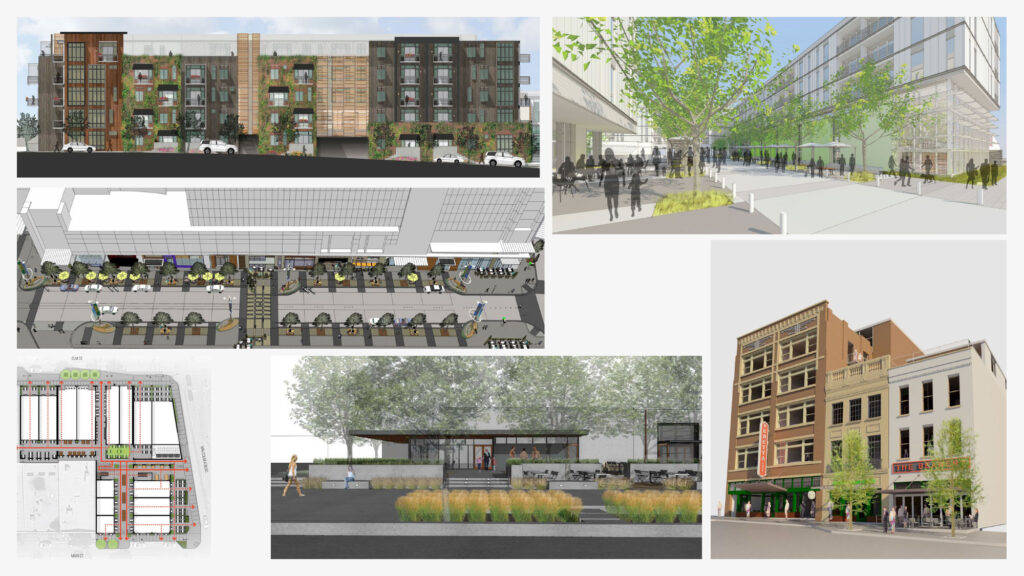
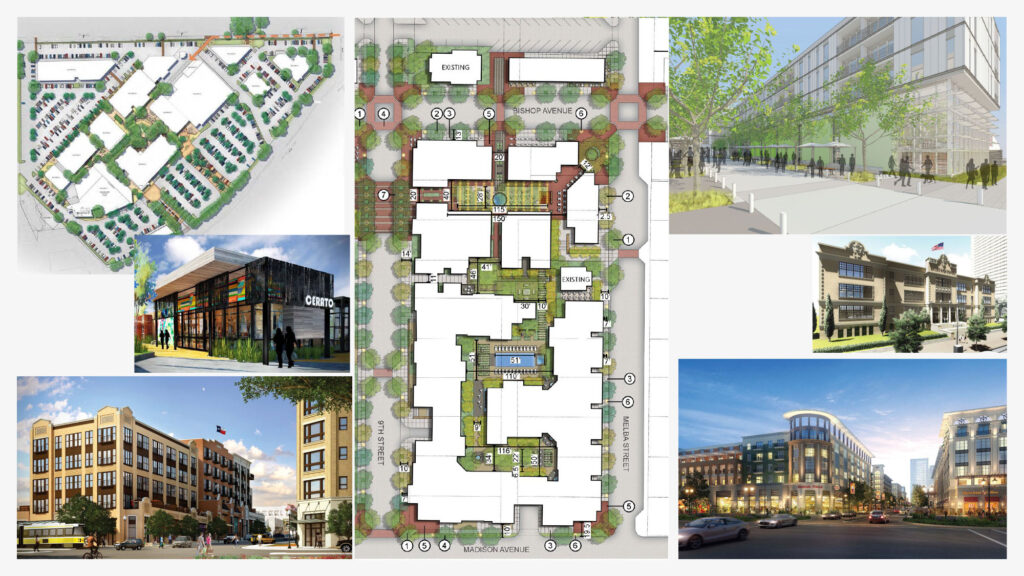
Now I’m going to run through a few slides that show some of the projects the panel has reviewed in its 11 years, they go in chronological order. This first page includes some of the projects that we reviewed in the first two or three years. You’ll recognize a Statler, you’ll recognize a couple of projects on Elm Street, Farmers Market, West End District, and Victory. A couple of projects you may not recognize, because they were never built. That does happen, occasionally projects come in, and for whatever reason financially, can’t happen. Although disappointing, the discussions that come out of it are very important.
The other thing I want to point out is that we do see from time to time the same developer come in more than once. They have come in once because they know that we want TIF funding and will come in again, not necessarily asking for any city assistance other than wanting to see how it applies to the panel. So that has been very encouraging.
The size and breadth of projects go from the size of Redbird Mall to Bishop Arts, to individual buildings, to this Dallas High School site. They have gone through a few iterations for different components of the projects. They could be individual street projects. Generally, it’s individual projects and something that we’ve seen a lot especially in Dallas is the redevelopment of the office buildings into residences or hotels. This is something that we’ve seen from day one.
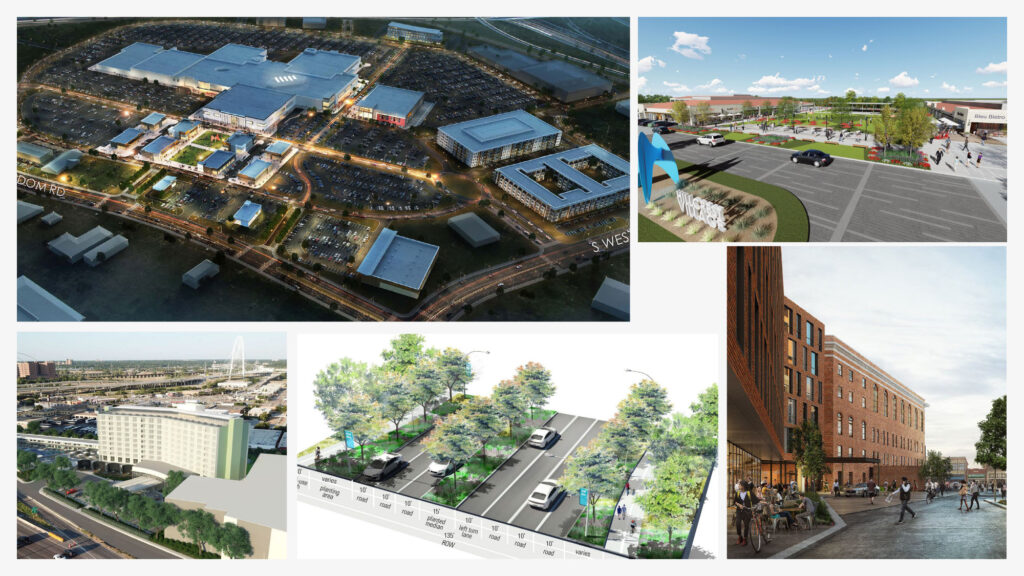
This slide shows several images of Redford mall. Conversions or new developments of existing strip malls that have been denying areas that incorporate a lot of public open space and really reimburse those remaining retail spaces. The city is working on a huge street project on Perry Hines Boulevard. A couple of hotels here at the very bottom of the existing one.
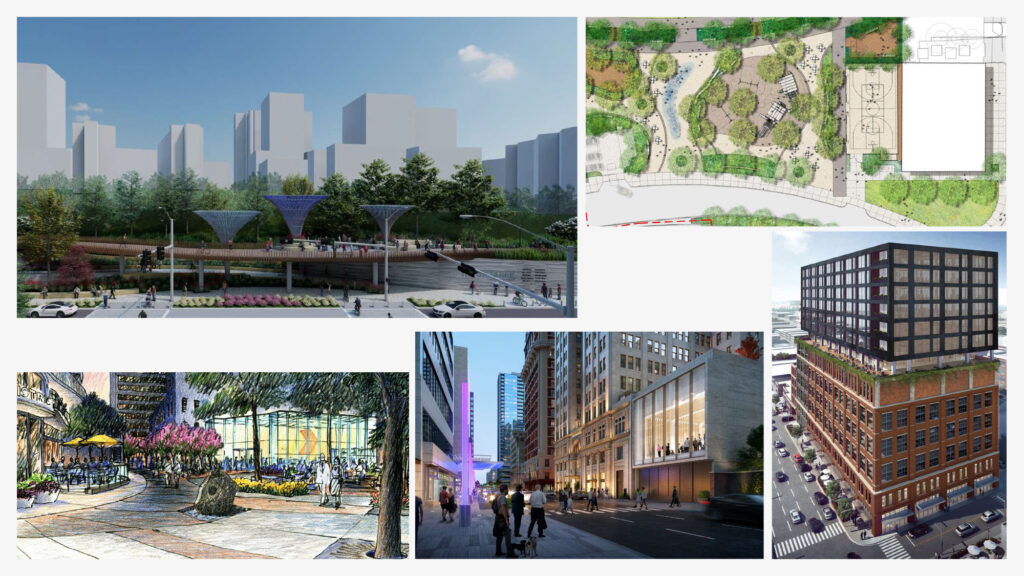
The last slide shows an extension of the 50-mile bike trail through the city of Dallas and a project for Harwood Street Park.
I’m sure I missed a couple of things, but my hope was to provide you all with information about our developments, what’s included in the Urban Design Peer Review Panel process, who the current panel members are, and which projects get reviewed and why.
So, with that, I think I’ve left time for questions. Thank you.
Check back soon for a Q & A summary of this event.
